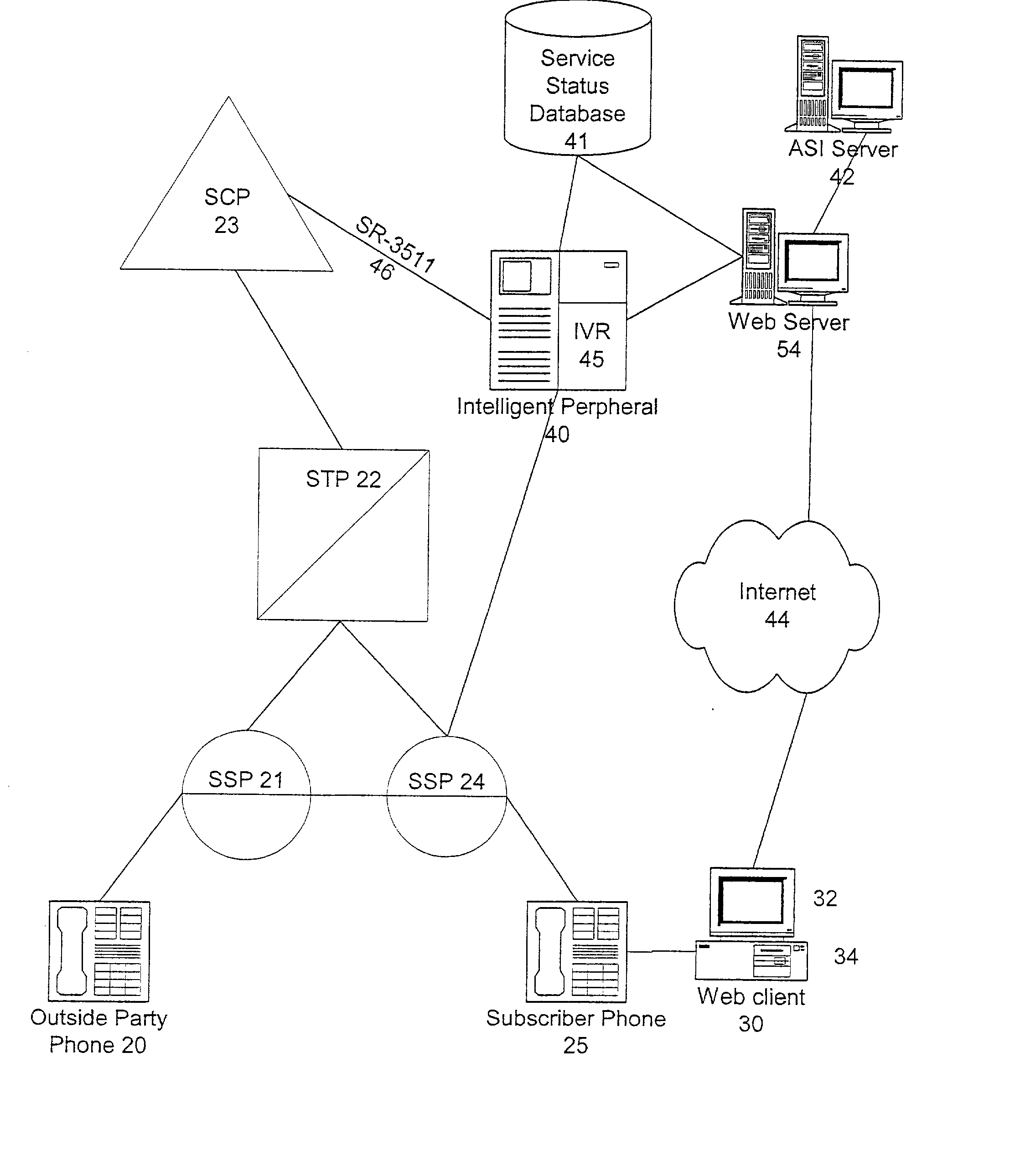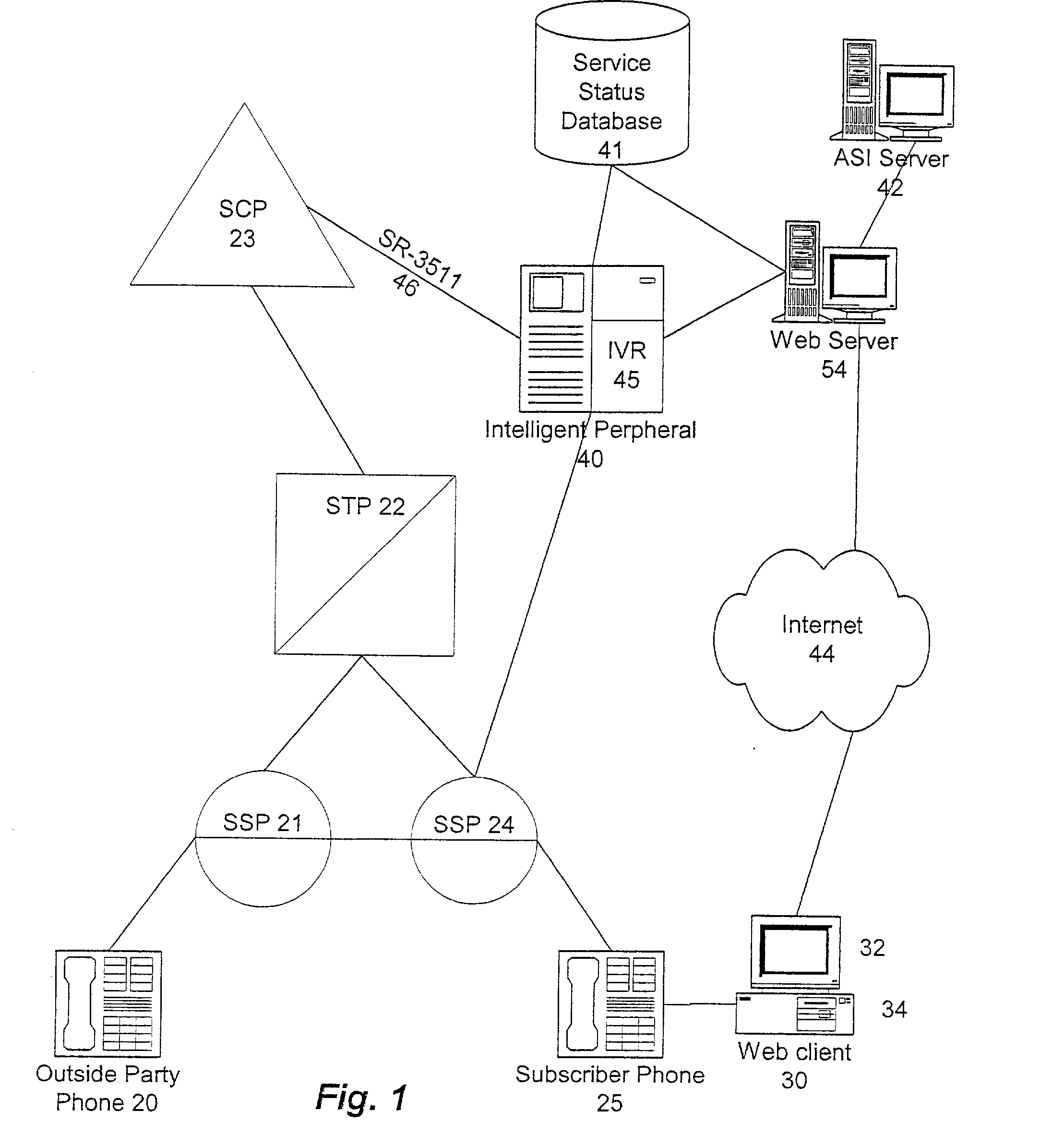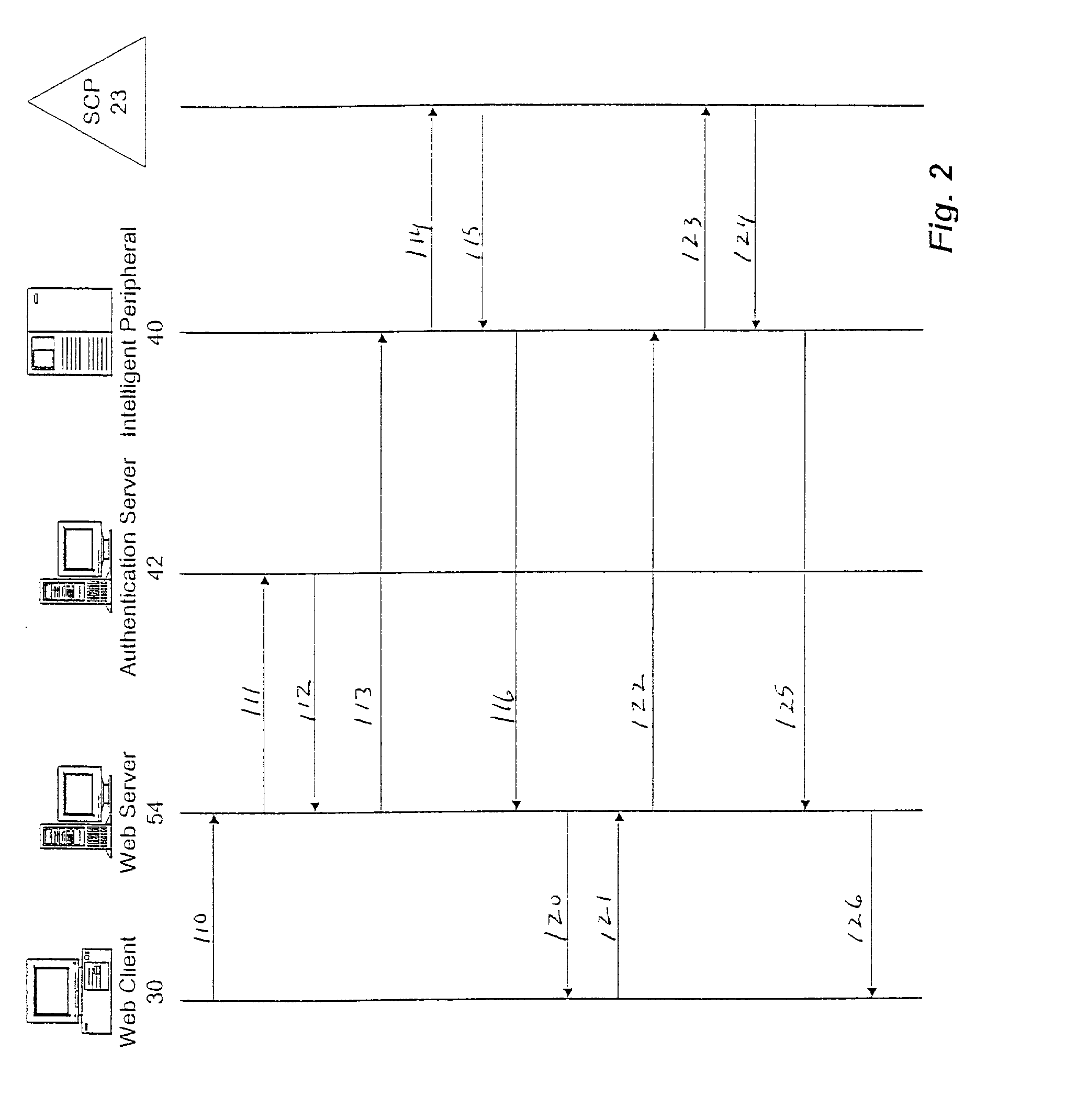Voice enhancing for advance intelligent network services
a technology of intelligent network and voice enhancement, applied in the field of telecommunications, can solve the problems of difficult users to gauge when the service alteration will take effect, limited the number and types of services that can be provided and modified by subscribers, and difficult for users to gauge the effect of service alteration
- Summary
- Abstract
- Description
- Claims
- Application Information
AI Technical Summary
Benefits of technology
Problems solved by technology
Method used
Image
Examples
Embodiment Construction
[0112] The present invention relates to enhancing AIN call services to further resolve the previously identified problems, simply and efficiently. The AIN call services to which the voice enhancement applies may be implemented individually or through a Personal Call Manager (PCM) system, along with other telecommunication services, such as call monitoring, Flexible Call Forwarding, Internet Caller Identification (ICID), Incoming Call Manager (ICM), Outgoing Call Control (OCC) and personal directories. The present invention also relates to an AIN based service that allows a subscriber connected to a communications network, including the Internet and other packet switched type data networks, as well as through conventional IVR and service node / intelligent peripheral (SN / IP) systems, to customize and execute the AIN call services, with near real-time access to the service data. Furthermore, the present invention enables the IVR and SN / IP systems to incorporate voice recognition, furthe...
PUM
 Login to View More
Login to View More Abstract
Description
Claims
Application Information
 Login to View More
Login to View More - R&D
- Intellectual Property
- Life Sciences
- Materials
- Tech Scout
- Unparalleled Data Quality
- Higher Quality Content
- 60% Fewer Hallucinations
Browse by: Latest US Patents, China's latest patents, Technical Efficacy Thesaurus, Application Domain, Technology Topic, Popular Technical Reports.
© 2025 PatSnap. All rights reserved.Legal|Privacy policy|Modern Slavery Act Transparency Statement|Sitemap|About US| Contact US: help@patsnap.com



